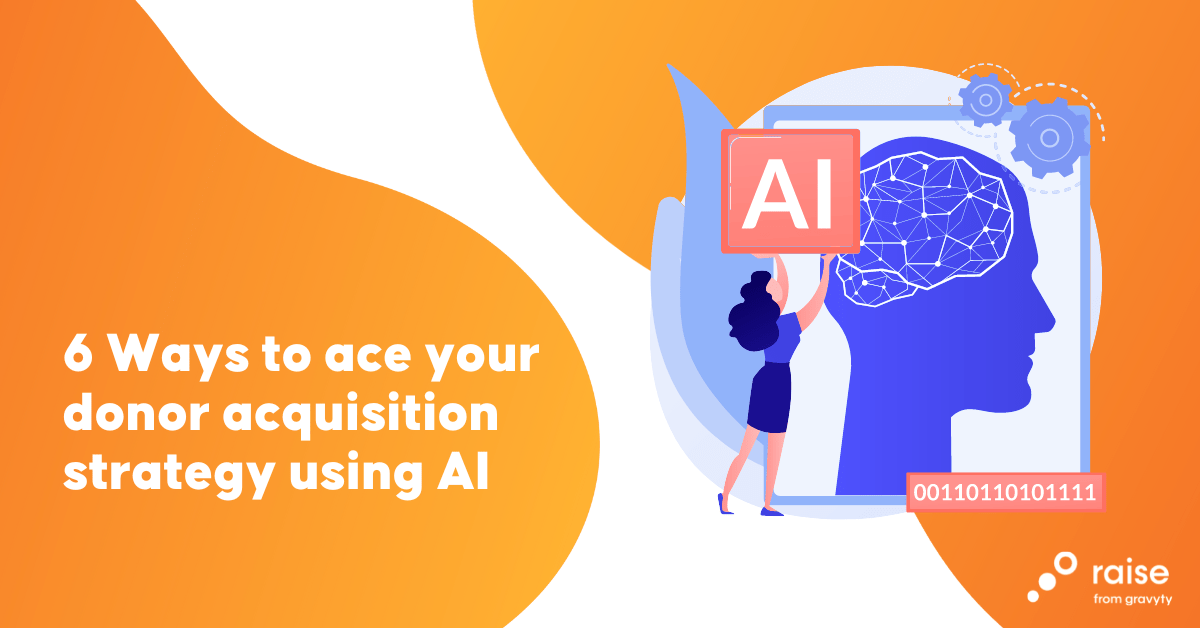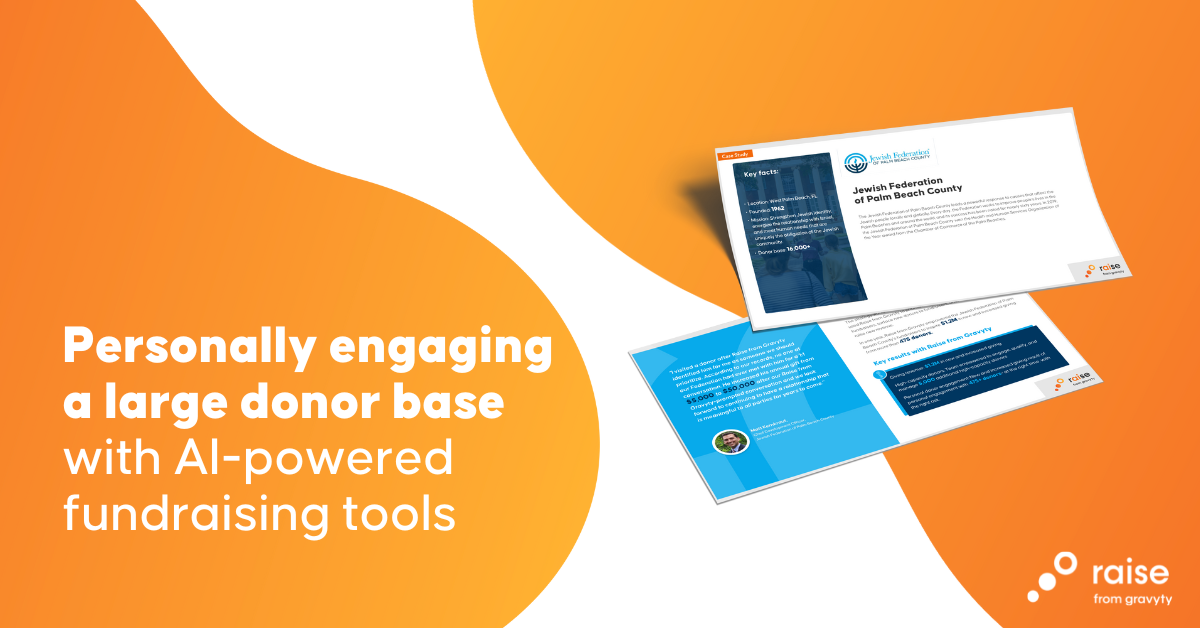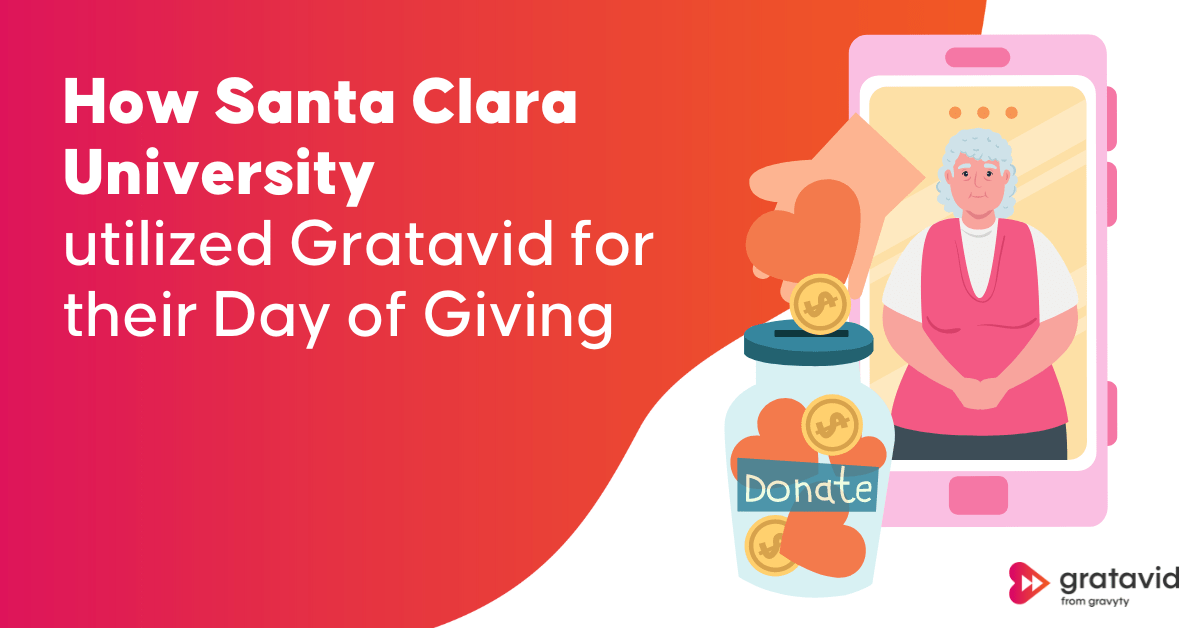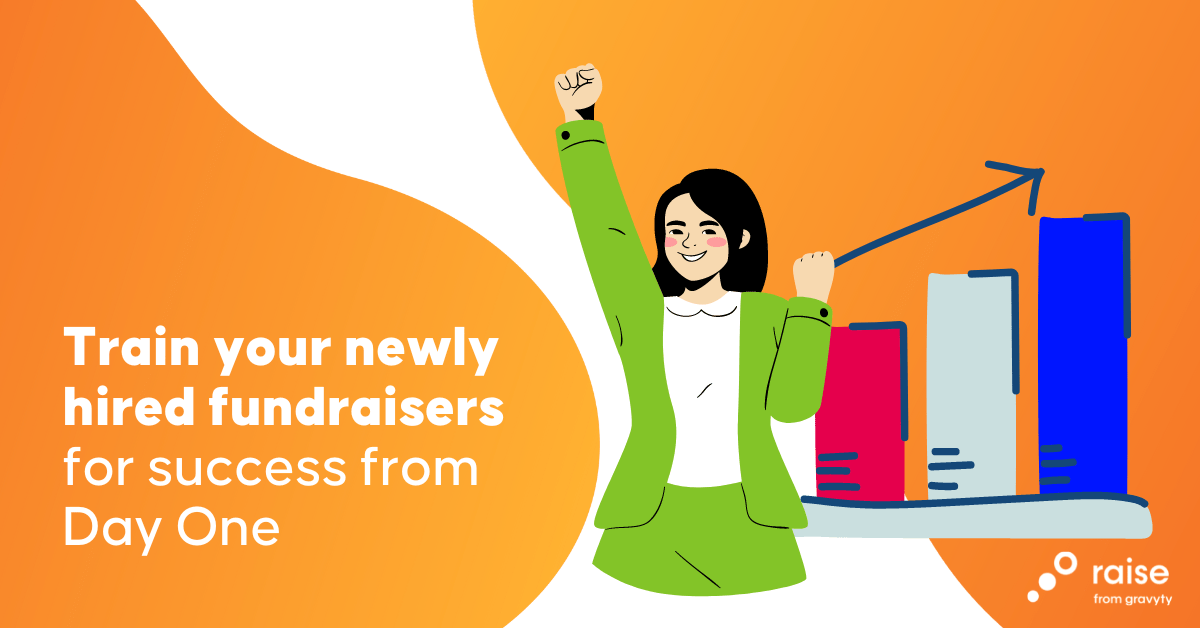6 ways to ace your donor acquisition strategy

A guide for fundraisers
Every fundraiser-donor relationship has to start somewhere. Who you engage as a potential donor—and how and when you approach them—is critically important as it sets the stage for the future relationship with that donor.
A good donor acquisition strategy involves multiple steps which together will help ensure that your fundraisers have a healthy supply of interested donors to turn to as and when needed.
At each stage of the door acquisition journey—from planning to execution to the final analysis—AI can cut out a lot of the grunt work, making it easier for your team to work faster, more efficiently and more accurately. This guide for fundraisers shows you how to harness the power of AI to ace your donor acquisition strategy.
Using AI at each step in your donor acquisition journey
Stage 1: Understanding potential donors
In order to embark on a new relationship with a potential donor, you first need to understand what they value and consider to be important. Once you have established this, you can find ways to connect meaningfully and with relevance. The best way to learn about your potential donors is to identify and evaluate data your organization has stored about community members. Consider their interests and affiliations, any events attended or clubs joined, history with the organization, previous donation amounts and geographical location.
It is also useful to find out if they have replied to any past communications, how they like to be addressed and which communication modality—email, phone, letter—they respond to best. This type of information helps you flesh out realistic donor personas and slip your constituents into categories, making it easier for you to approach the right people in the right way.
How AI helps
Finding all the information you need to make the right approach can take a lot of time and effort. AI fundraising technology can quickly and efficiently deliver complete donation details and history, personal information and proactive prompts, offering a complete picture for each assigned donor.
Stage 2: Segmenting your audience + performing targeted outreach
Once you understand more about your potential donors and have decided which ones you want to approach, you can begin to segment them to make your task easier and more efficient. Donor segmentation involves categorizing potential donors based on similar characteristics such as interests, affiliations or demographics. There are several different ways to segment donors and the strategy you choose will depend on your goals. Examples include:
- Special interests
- Geographic location
- Whether they have donated in the past and at what dollar amounts
- Donation frequency
- Estimated capacity
No potential donor wants to receive a generic communication that has no relevance. Imagine receiving an email from an organization thanking you for your continued support when you have never before donated!
The overarching goal of segmentation is to enable fundraisers and gift officers to approach donors in a manner that is most appropriate to them. Whatever segmentation strategy you chose, knowing enough about the donor in advance and designing an approach that fits each person will help you avoid communication errors.
How AI helps
An AI-powered fundraising tool like Raise from Gravyty can quickly and easily identify the donors and prospects you need to contact each day, saving you hours of time spent on administrative tasks like prioritization and segmentation. It can also draft a tailored email using information from your CRM to personalize the approach for each donor. What’s more, Raise uses machine learning to identify and replicate your unique communication style within days. All you have to do is check, edit and send.
Stage 3: Building + sustaining relationships
While most fundraisers ultimately want to move donors along from a position of casual interest to one of being “committed for life,” the vehicle for doing this is the relationship. The fundraiser-donor relationship is no different than any other relationship in that the most successful ones are based on understanding, mutual interests and being thoughtful to one another. Organizations that take relationships with their donors seriously and strive for a more personal communication style are known as donor-centric organizations and tend to have better success at fundraising than those who are overly focused on what they want to achieve for themselves.
Most fundraising organizations store important information about donors—such as how they like to be addressed, how many children they have, where they live and what seems to be important to them—in their CRM. When approaching potential donors, it pays to include personal bits of information that lift the relationship from purely transactional to one that feels much warmer. In the traditional approach, fundraisers need to dip into the database before making an approach to gather these tidbits of personal information to include in their approach.
On the flip side, fundraisers will do well to remember that relationships are a two-way street. Asking the donor questions and showing interest in their life is an important part of relationship-building; it will also help them glean additional information that will inspire future interactions. Any new information learned in these interactions will only be helpful to the wider organization if the CRM is fully updated in good time.
How AI helps
Sourcing the information needed to make an effective approach can be very difficult and time-consuming but fundraising tools use powerful algorithms to help fundraisers identify the best time to reach out to donors, design a personalized approach and even recommend a specific ask amount. AI can also save time by automatically updating the CRM with meaningful action entries and contact reports.
Stage 4: Using email to build relationships
A prerequisite to acquiring new donors is raising awareness about your activities and projects and the impact they make. In today’s digital era, email marketing has become one of the most important ways for organizations to grow awareness about their activities and acquire new potential donors. It is also one of the best modalities for converting potential donors into supporters, building relationships over time and retaining the current donor base.
Because of the central role email plays in today’s fundraising approach, fundraisers need to get skilled at using email in an impactful way. While some fundraisers may have excellent writing skills, others balk at the idea of composing an effective email and can spend hours writing and rewriting it until they are happy.
But writing a good email isn’t just about bringing out your inner Jane Austen; an effective fundraising email has to be based on information and data. You need to start from a place of knowing about the person you are writing to, their history with your organization, former donations and interests. Like all the research activities already mentioned, this is time-consuming and most fundraisers don’t have a lot of spare time!
How AI helps
An AI-based fundraising tool can generate a tailored email draft incorporating all the relevant information gathered from the CRM. Fundraisers can then check it over, add any additional details they want and send it when ready. Because AI algorithms help the tool learn each fundraiser’s unique communication style within days, they no longer need to spend hours sweating over drafts that simply won’t come together.
Stage 5: Improving organizational efficiency
Donor acquisition consists of many different steps and tasks. In order to carry out these steps with maximum efficiency, you need an efficient office with clear, streamlined procedures. Staff members should not have to waste time figuring out their tasks for the day, scouring the database for information, or manually updating the CRM after every interaction.
How AI helps
An AI fundraising tool can greatly support your staff in all areas of donor acquisition. By using a more organized, automated and streamlined system, each fundraiser can accomplish more.
Stage 6: Analyzing metrics + improving performance
Setting goals and strategizing how to achieve these goals are important steps toward a donor acquisition strategy. The final step is to evaluate the success of your strategies and activities. You want to know if your efforts succeeded or not so you can make better plans for the future.
The best way to track progress is to decide in advance what metrics (KPIs) you will use to evaluate whether you have achieved your goals. This can be the number of new doors acquired, meaningful interactions created, the amount of donations received, or anything else you deem important. Next, you need a system that makes it simple for you to gather, store and retrieve your data.
How AI helps
By automating data storage and updating the CRM after each interaction, an AI fundraising tool can streamline the process of analyzing data and tracking KPIs. If you want to look at how many responses you received from a particular email campaign for example, you will find that this information has been automatically recorded in your CRM—even if staff members were too busy and forgot to record an interaction.
Ace your donor acquisition strategy with the latest innovations in fundraising technology
Donor acquisition isn’t easy, but it is critical to the future success of your organization. Take some pressure off by helping your staff become AI fundraisers and use the latest technologies to make donor acquisition easier, faster and much more efficient.
Find out how Raise from Gravyty can streamline your donor acquisition efforts while drastically cutting down your staff’s workload. Get a demo.



